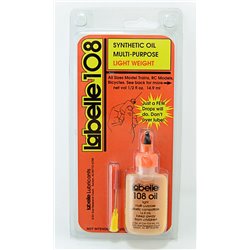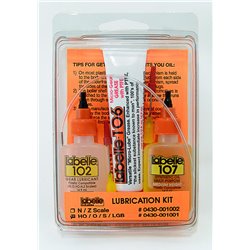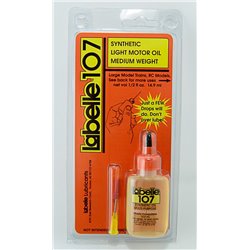Static grass puffer bottles work by manually charging model grass fibres with static electricity. When the charged...
No products
Product successfully added to your shopping cart
There are 0 items in your cart. There is 1 item in your cart.
Search Tips
The Dos and Don'ts of Lubricating Your Model Trains
Keeping your model trains running smoothly requires regular maintenance, and lubrication is a key part of that. However, using the wrong lubricant or applying it incorrectly can do more harm than good. To help you keep your layout in top condition, here are the essential dos and don'ts of lubricating your model railway.
The Dos
1. Use the Right Lubricant
Always use a lubricant specifically designed for model railways. Light synthetic oils and plastic-safe greases are ideal. Avoid household oils like WD-40, as they can degrade plastic and attract dust.
2. Apply Sparingly
Less is more when it comes to lubrication. A tiny drop is usually sufficient, as excess lubricant can spread onto tracks, leading to dirt build-up and loss of traction.
3. Lubricate Key Areas
Focus on axle points, gears, and motor bearings. These are the parts that experience the most friction and benefit the most from lubrication.
4. Clean Before Lubricating
Always clean the parts before applying oil or grease. Dust and dirt can mix with the lubricant, creating a grinding paste that will wear down components over time.
5. Check Your Manufacturer’s Guidelines
Every locomotive is different. Some models may have specific lubrication points, and using the wrong type of oil could damage delicate components. Always check the manufacturer's instructions before applying any lubricant.
The Don’ts
1. Don't Over-Lubricate
Excess lubrication can seep into unwanted areas, including electrical contacts, leading to poor conductivity and erratic running.
2. Don't Use the Wrong Type of Oil
Avoid petroleum-based lubricants unless specified, as they can cause plastic parts to degrade. Stick to synthetic, non-corrosive options designed for model railways.
3. Don't Forget the Track and Wheels
Lubrication isn't just about the locomotive. If you notice poor running, check for dirt and oil residue on the wheels and track. Cleaning these regularly can prevent the need for excessive lubrication.
4. Don't Ignore Regular Maintenance
Lubrication should be part of a routine maintenance schedule. Running your trains without checking them periodically can lead to unnecessary wear and tear.
5. Don't Apply Lubricant to the Motor Commutator
The motor’s electrical contacts should remain clean and dry. If lubricant gets onto the commutator, it can cause sparking, overheating, and poor performance.
Final Thoughts
Proper lubrication is essential for keeping your model railway running smoothly and extending the life of your locomotives. By using the right lubricant, applying it sparingly, and following manufacturer guidelines, you can ensure your trains perform at their best for years to come.
Click here to receive the tips weekly in your mailbox. You can unsubscribe at any time.










